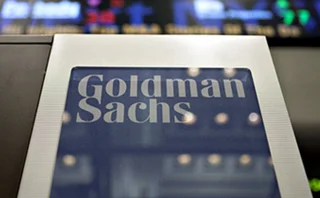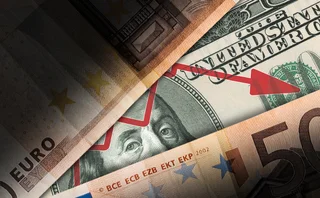Podcast: Lorenzo Ravagli on why the skew is for the many
JP Morgan quant proposes a unified framework for trading the volatility skew premium

In his epic poem The Divine Comedy, Dante Alighieri combined the regional dialects of his time to create the modern Italian language, a unifying tongue that could be understood throughout the land.
Fellow Florentine Lorenzo Ravagli, head of European FX volatility strategy at JP Morgan, jokes that his latest paper tries to do for volatility trading what Dante did for the Italian language, by proposing a unified framework for harvesting the skew premium in options.
Ravagli presents a range of strategies for trading the skew premium, which is driven by the asymmetric pricing of out-of-the-money calls and corresponding puts. The simplest possible way of taking a view on the skew premium is through delta-hedged risk reversals, he explains. But the complexity of this strategy can increase significantly if traders consider more advanced sensitivities, such as the exact location of the strikes or the sensitivities of the maturities.
“Across different trading desks, [I found that] different people were using different metrics for proposing a tentative explanation of the P&L of a very basic skew position,” Ravagli says. This gave him the idea to propose a common standard: “I've tried to vulgarise some concepts that were somehow expressed in a very theoretical framework and bring them down to a language which could be accessible by a wider range of clients.”
In his paper, Ravagli introduces two theoretical – yet practical – concepts for unifying the different approaches to trading the skew premium. One links the first-order sensitivities of an option price to changes in the implied parameters, namely the value of the skew or the volatility of volatility. The other is a proxy expression for the vol of vol’s term structure. This curve is inverted so short-dated vol of vol is structurally much higher than longer-dated vol of vol. These concepts, Ravagli says, can allow traders to more accurately capture the P&L of an options portfolio.
Ravagli explains how to implement a risk reversal strategy to capture the skew premium. “A risk reversal is simply a position which buys a call and sells the put, or it does the opposite, depending on which of the two volatilities is higher,” he says. He also explains how to delta-hedge, rebalance, account for transaction costs and monitor the strategy over time.
Ravagli plans to conduct further research into this topic. One avenue that remains to be explored is the diversification effect such strategies could have on multi-asset, multi-strategy portfolios.
His unified framework for trading the skew premium could help popularise the strategy. But can it really compare to Dante’s masterwork? Let’s hope we don’t have to wait seven centuries to find out.
Index
00:00 Intro
01:30 The role of a quant strategist
06:00 The volatility skew
10:36 The theoretical innovations in skew trading
17:17 How to set up a skew trading strategy
24:57 Transaction costs and market impact
30:13 The skew premium in other asset classes
35:59 Skew strategies in a diversified portfolio
42:32 Future research
To hear the full interview, listen in the player above, or download.
Only users who have a paid subscription or are part of a corporate subscription are able to print or copy content.
To access these options, along with all other subscription benefits, please contact customer services - www.fx-markets.com/static/contact-us, or view our subscription options here: https://subscriptions.fx-markets.com/subscribe
You are currently unable to print this content. Please contact customer services - www.fx-markets.com/static/contact-us to find out more.
You are currently unable to copy this content. Please contact info@fx-markets.com to find out more.
Copyright Infopro Digital Limited. All rights reserved.
As outlined in our terms and conditions, https://www.infopro-digital.com/terms-and-conditions/subscriptions/ (point 2.4), printing is limited to a single copy.
If you would like to purchase additional rights please email info@fx-markets.com
Copyright Infopro Digital Limited. All rights reserved.
You may share this content using our article tools. As outlined in our terms and conditions, https://www.infopro-digital.com/terms-and-conditions/subscriptions/ (clause 2.4), an Authorised User may only make one copy of the materials for their own personal use. You must also comply with the restrictions in clause 2.5.
If you would like to purchase additional rights please email info@fx-markets.com
More on Trading
Goldman Sachs doubled FX trading revenues in 2024
Bumper Q4 powers bank to head of US dealer pack by foreign exchange revenue
EU firms fear dollar liquidity becoming tariff bargaining chip
Eurozone banks rely on dollars for 17% of funding; trade war escalation could affect access
Trump tariffs sent FX options traders on a wild ride
As US assets sold off, dealers found themselves on the front lines of a hedging scramble
FX liquidity ‘worse than Covid’ amid tariff volatility, dealers say
Available liquidity for single clips dropped to as low as $20 million ahead of tariff pause
TCA providers link FX counterparty selection with execution
Services from BestX and Tradefeedr aim to automate the pre-trade and execution process
Tariffs volatility prompts rush to re-hedge EUR/USD options books
Banks left scrambling to buy vol as spot surged beyond expectations
Dealers bullish on Bloomberg chat interface for FX markets
Service expanded its API offering to integrate broker chats into banks’ engines for cash FX pricing late last year
Corporates hamstrung in response to FX volatility
Restrictions around hedging programmes leave US firms struggling to adapt to dollar weakness








